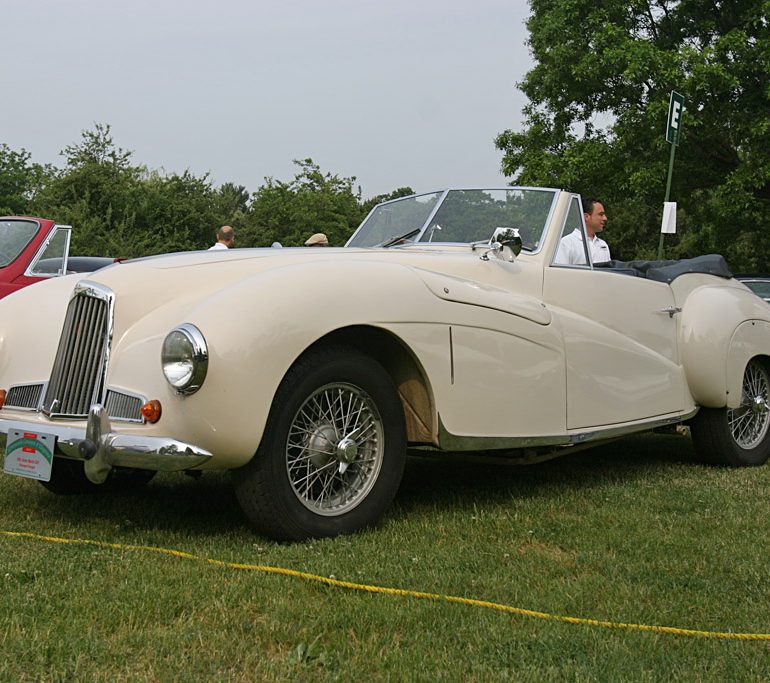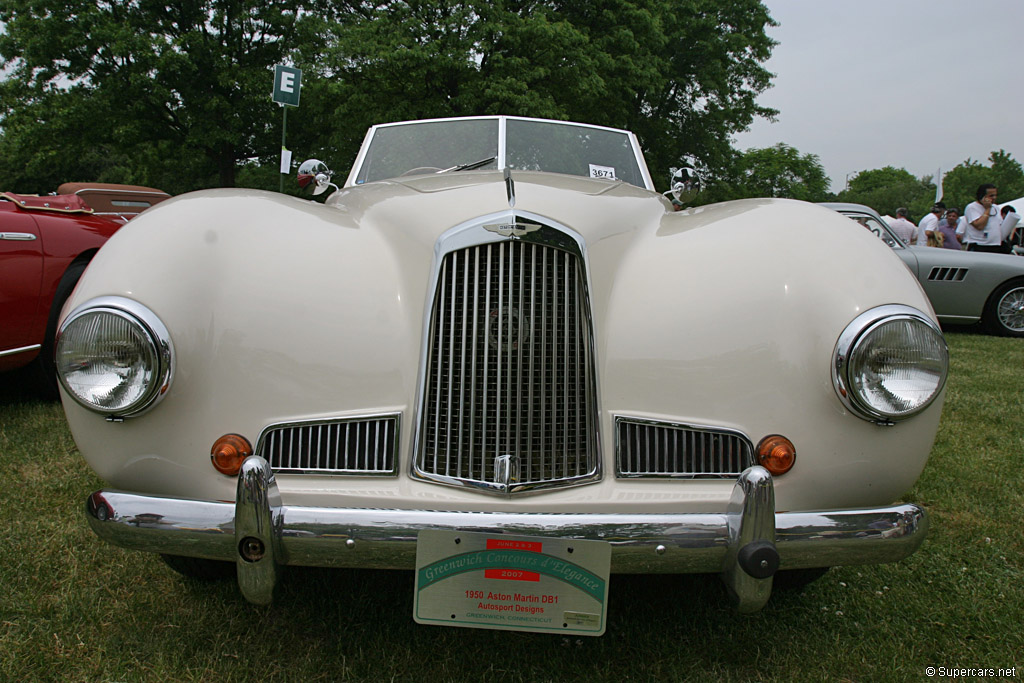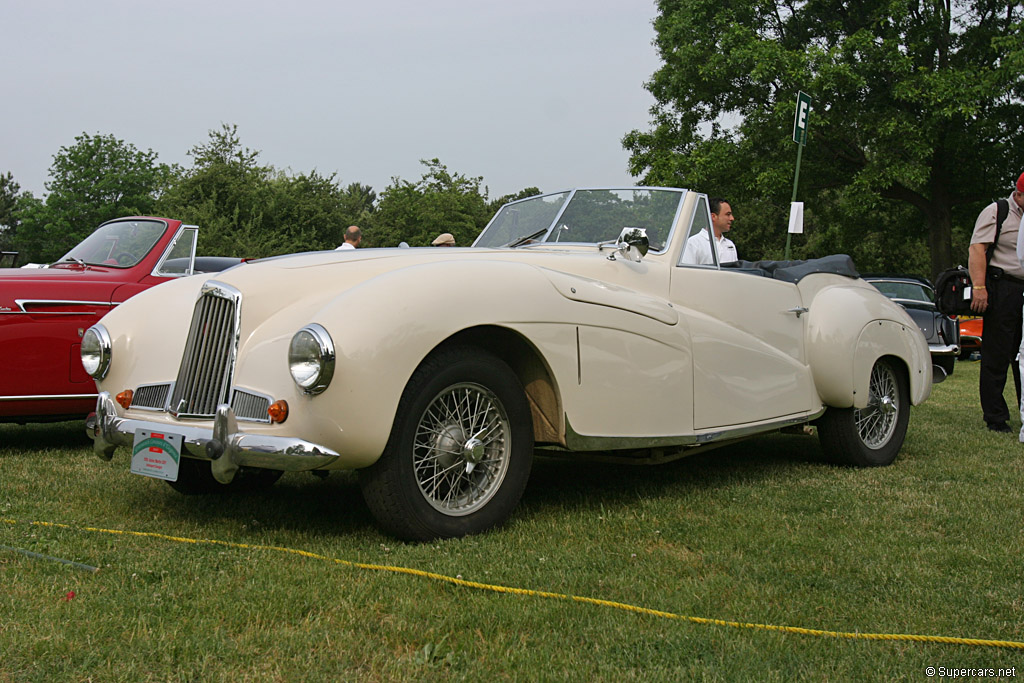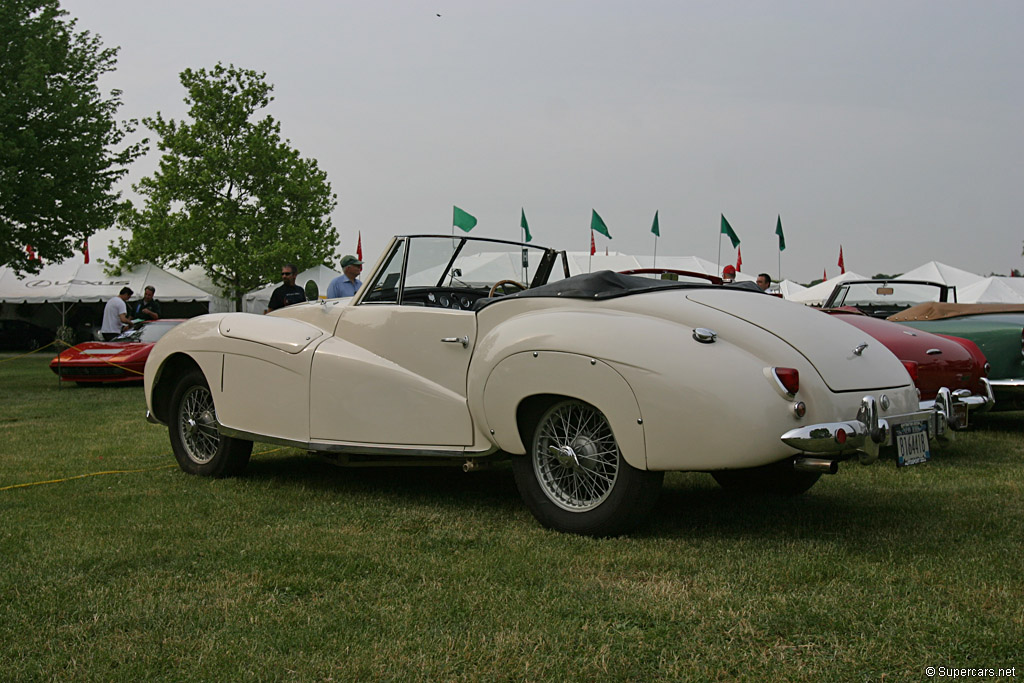1948→1950 Aston Martin DB1 2-Litre Sports
After David Brown briefly tested Aston Martin’s Atom prototype, he paid 20 000 GBP and the company was his. He had grand ideas for his new purchase, but started out with a new drop-head coupe that became the DB1.
The underpinnings for the DB1 came from a 1939 Aston Martin prototype called the Atom. It used a SOHC, 8-valve, 2-liter engine that produced 90 bhp. The chassis was a unique multi-tube affair and provided support for an awkward 4-seat sedan.
David Brown decided that a convertible or drop-head coupe version of the Atom would be a good launch point for this new venture. He had Claude Hill stiffen the chassis to accept a new flowing body. The design used lateral supports that were tall enough to support the top of the body.
Frank Freeley was responsible for designing the body which was curvaceous and made all the pre-war Astons look antiqued by comparison. The two front fenders were long and exaggerated by accents on the doors. They also concealed the spare tires which were accessed through small flaps on the top edge of the fenders.
Even though Willie Watson’s new DOHC Inline-6 was in the pipeline, the Atom’s 2-Litre engine was retained. This engine was the same capacity as the old pre-war Astons but its design was all new. It had a much shorter stroke and a higher located camshaft. This drove the rear wheels though a dry-plate Bork & beck Clutch and one of David Browns signature gearboxes. Already established in the gear set business before acquiring Aston, David Brown had the resources to equip a thoroughly modern, all synchromesh, 4-speed transmission.
Called the ‘Two Litre Sports’, the new Aston was proudly displayed at the 1948 London Motor Show as a bold new direction for the company. It was made clear that the car was completely distinct, and didn’t use any of Aston’s prewar tooling. The DB1’s styling hinted at Aston’s future, especially with its signature three-part grill that would inspire shapes of every car that would follow.
Always keen on keeping a competitive edge, David Brown used one of the very first 2-Litre chassis to go racing. A small two-seat roadster body was fitted and later won its class at the 24-Hours of SPA. This emphasized the race-bred pedigree of the chassis and its independent front suspension.
It has been estimated that only 14 DB1s were made before David Brown got to launch the DB2. It made a fitting replacement with the new Inline-6 engine that was suitable for LeMans. Later on, the company would go on to win some of the world’s best racing accolades which can all trace their history back to the DB1.
Story by Supercars.net
Story by Richard Owen
In Detail
| submitted by | Richard Owen |
| type | Series Production Car |
| production years | 1948 – 1950 |
| built at | Feltham, England |
| production | 16 |
| engine | Inline-4 |
| aspiration | Natural |
| valvetrain | Pushrod OHV, 2 Valves per Cyl |
| fuel feed | Twin SU Carbutettors |
| displacement | 1970 cc / 120.2 in³ |
| bore | 85 mm / 3.35 in |
| stroke | 92 mm / 3.62 in |
| power | 67.1 kw / 90 bhp @ 4750 rpm |
| specific output | 45.69 bhp per litre |
| bhp/weight | 78.74 bhp per tonne |
| redline | 2860 |
| body / frame | Steel Body over Steel Frame |
| driven wheels | RWD |
| wheel type | Dunlop Wire Wheels |
| front tires | 5.75×16 |
| rear tires | 5.75×16 |
| front brakes | Girling Hydrualic Drums |
| rear brakes | Girling Hydrualic Drums |
| steering | Worm & Roller |
| f suspension | Trailing Arms w/Coil Springs, Hydraulic Shock Absorbers |
| r suspension | Rigid Axle w/Trailing Links, Coil Springs, Hydraulic Shock Absorbers |
| curb weight | 1143 kg / 2520 lbs |
| wheelbase | 2743 mm / 108 in |
| length | 4470 mm / 176 in |
| width | 1715 mm / 67.5 in |
| height | 1410 mm / 55.5 in |
| transmission | 4-Speed Manual w/Borg & Beck Clutch |







